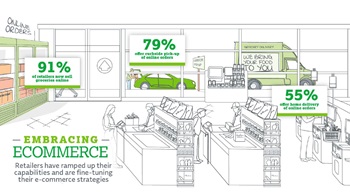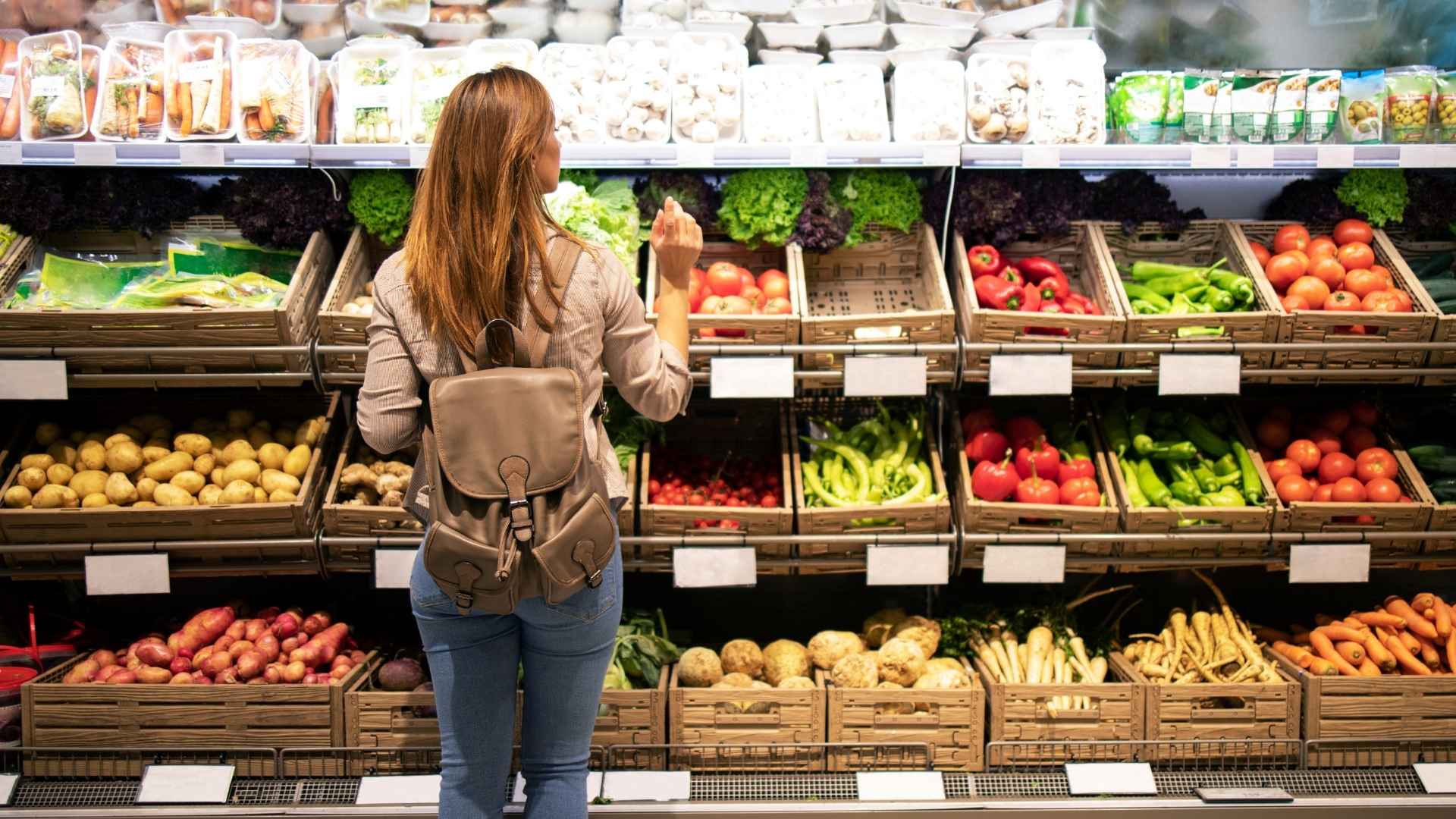By Heather Garlich, Senior Vice President, Communications, Marketing & Consumer/Community Affairs, FMI
 At FMI, we used to debate whether our industry was going through an evolution or a revolution, and pre-pandemic, all signals indicated that a tidal wave of transformation was coming after the introduction of omnichannel models. But no one could have predicted the influence of the COVID-19 pandemic, which fundamentally changed the way we as consumers grocery shop and the way the food industry does business. Depending on your viewpoint regarding the pace of change and the catalysts for it, there is one constant: Our industry continues to invest heavily in customer experiences.
At FMI, we used to debate whether our industry was going through an evolution or a revolution, and pre-pandemic, all signals indicated that a tidal wave of transformation was coming after the introduction of omnichannel models. But no one could have predicted the influence of the COVID-19 pandemic, which fundamentally changed the way we as consumers grocery shop and the way the food industry does business. Depending on your viewpoint regarding the pace of change and the catalysts for it, there is one constant: Our industry continues to invest heavily in customer experiences.
Even as inflationary pressures increase costs and impact grocery shopping behaviors, food retailers tell us in The Food Retailing Industry Speaks survey that they’re pursuing strategic differentiation strategies to compete on their already thin margins. We recently created a visual representation of the most significant areas of investments that suggest an evolving grocery experience.
Embracing Ecommerce
Online share of total sales has continued to grow for food retailers with brick-and-mortar operations, from 2.5% of sales before the pandemic (2019), to 5.7% in 2020 and 6.5% in 2021. To accommodate this shift in shopping behavior, retailers have evolved their delivery models and services. Seventy-nine percent of retailers now offer store pick-up for online ordering, while 55% offer home delivery of online orders. Despite the growth of ecommerce use and sales, many grocers admit they’re still trying to crack the code of online grocery shopping.
Changes at Checkout
Food retailers are employing a variety of technology to improve the checkout experience. Some of the most popular areas receiving a makeover include enhancing scan-and-go technology, allowing for dynamic pricing, and mobile checkout systems to make checking out faster and more “frictionless.”
Growing Selections & Expanding Departments
Retailers report they are also expanding numerous fresh or perimeter departments. More than 80% are increasing the space they allocate to fresh-prepared grab-and-go products as well as offering foods with beneficial nutrition attributes for health and well-being (70%). The departments expected to grow include locally sourced (72%) and organic produce (62%), plant-based foods and animal protein alternatives (64%), allergen-free (38%) and gluten-free (35%) SKUs. Even amid the economic volatility, the food industry is zeroing in on shoppers’ evolving tastes and behaviors.
Investing in our Workforce
Nearly all responding food industry companies reported that difficulty attracting and retaining quality employees was negatively impacting their businesses. To combat this problem, the top strategies employed for retaining and attracting full-time employees include better wages and salaries; improved benefits; flex time; training and skills development; bonuses; and education programs/benefits.
Technology on the Front Burner
Rapid adoption of technology was a key component in helping our members’ businesses overcome many of the challenges posed by the pandemic. Seventy-three percent of food retailers say they are continuing to invest in and experiment with technologies to improve the customer experience and enhance business efficiencies. For example, 58% of retailers have goals for energy-use reduction and 15% utilize in-store technology such as robotics and artificial intelligence.
Based on these facts against the backdrop of economic uncertainty, the philosophical debate still exists. Perhaps it is a revolutionary moment we’re experiencing in the food industry, or maybe it’s really an evolution in order to adapt to the environment around us and thrive?
Discover more and download the Evolving Grocery Experience


 Industry Topics address your specific area of expertise with resources, reports, events and more.
Industry Topics address your specific area of expertise with resources, reports, events and more.
 Our Research covers consumer behavior and retail operation benchmarks so you can make informed business decisions.
Our Research covers consumer behavior and retail operation benchmarks so you can make informed business decisions.
 Events and Education including online and in-person help you advance your food retail career.
Events and Education including online and in-person help you advance your food retail career.
 Food Safety training, resources and guidance that help you create a company food safety culture.
Food Safety training, resources and guidance that help you create a company food safety culture.
 Government Affairs work — federal and state — on the latest food industry policy, regulatory and legislative issues.
Government Affairs work — federal and state — on the latest food industry policy, regulatory and legislative issues.
 Get Involved. From industry awards to newsletters and committees, these resources help you take advantage of your membership.
Get Involved. From industry awards to newsletters and committees, these resources help you take advantage of your membership.
 Best practices, guidance documents, infographics, signage and more for the food industry on the COVID-19 pandemic.
Best practices, guidance documents, infographics, signage and more for the food industry on the COVID-19 pandemic.
